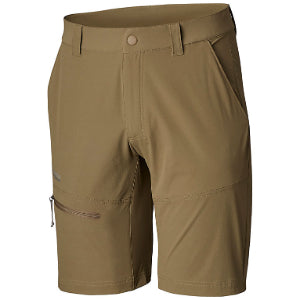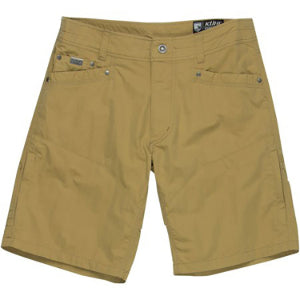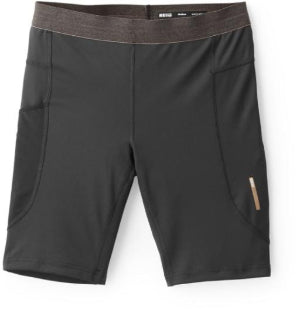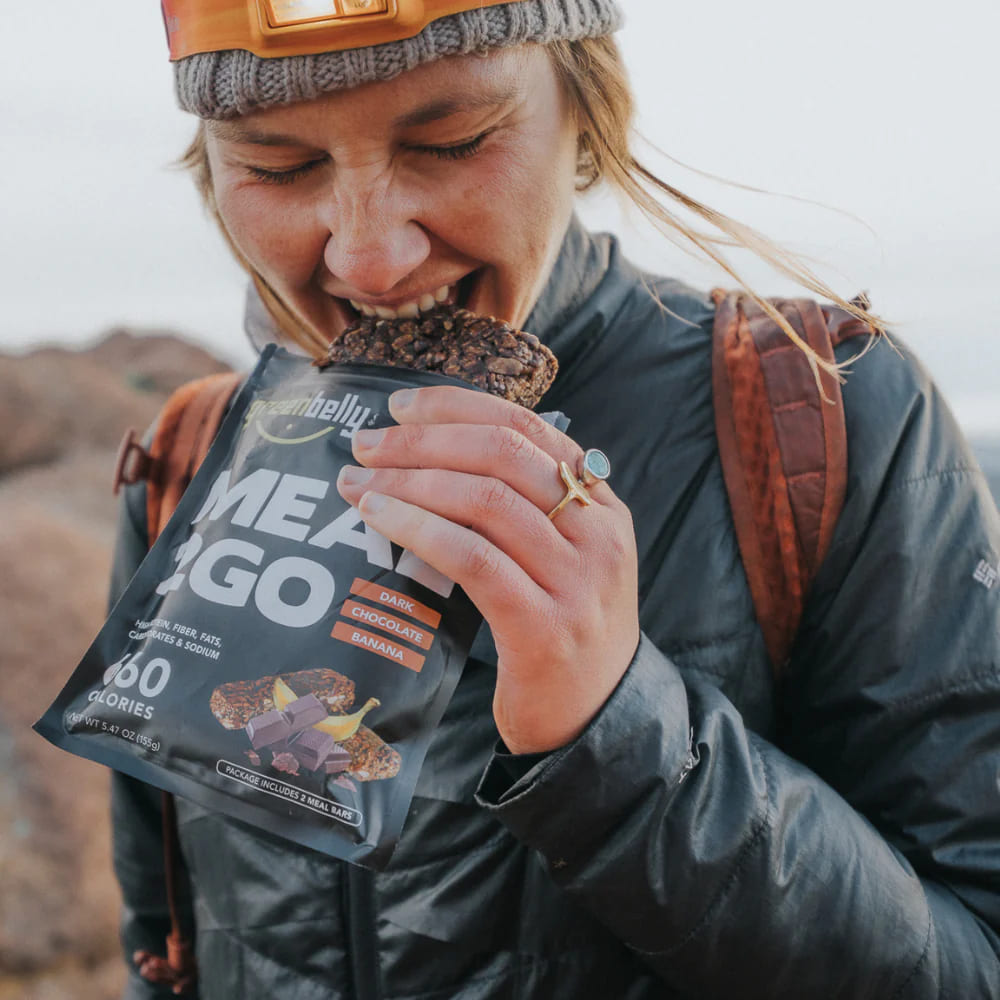Photo by @bonesthenomad
Hiking shorts need to be lightweight, comfortable, and breathable. We tested the best hiking shorts on the market in 2024. Read on to see how they performed, which ones are best for you, and get some buying advice.
Table of Contents
Best Hiking Shorts
The best hiking shorts are:
- Best Overall Hiking Shorts: OUTDOOR RESEARCH MEN'S FERROSI
- Best Ultralight Hiking Shorts: PATAGONIA STRIDER SHORTS
- Best Budget Hiking Shorts: COLUMBIA FEATHERWEIGHT HIKE SHORT
- Best Premium Hiking Shorts: KUHL SILENCR KARGO SHORTS
| MODEL | Material | Inseam Length | PRICE | Weight | SCORE |
|---|---|---|---|---|---|
| 1. Outdoor Research Men's Ferrosi | 90D Stretch Woven Ripstop made of 86% Nylon; 14% Spandex | 10 in | $75 | 7.7 oz | 9/10 |
| 2. Patagonia Strider Pro Shorts | 100% Recycled Polyester Stretch Ripstop With DWR | 5, 7 in | $79 | 3.9 oz | 9/10 |
| 3. Columbia Featherweight Hike Short | 94% Polyester, 6% Elastane Stretch Woven | 10 in | $50 | 16 oz | 9/10 |
| 4. Kuhl Silencr Kargo Shorts | 100% Mechanical Stretch Polyester | 8, 10, 12 in | $79 | 4.8 oz | 8/10 |
| 5. REI Co-Op On The Trail Run Shorts | 84% Polyester, 16% Spandex | 5 in | $14.83-49.95 | - | 8/10 |
| 6. prAna Stretch Zion Short II | 95% Recycled Nylon, 5% Elastane | 8, 10, 12 in | $75 | 9.1 oz | 8/10 |
Best Overall Hiking Shorts:
OUTDOOR RESEARCH MEN'S FERROSI
Price: $75
See on OUTDOOR RESEARCH See on AMAZON
PROS:
✅ Comfortable
✅ Full-featured
CONS:
❌ Price
❌ Slim fit reduced beathabilty
KEY SPECS
- Material: 90D Stretch Woven Ripstop made of 86% Nylon; 14% Spandex
- Inseam Length: 10 in
- Weight: 7.7 oz (0.48 lbs)
The Men's Ferrosi shorts from Outdoor Research are a favorite in the hiking community. They are robust and stand up to the rigors of the trail thanks to their 90D nylon construction.
We found the nylon and spandex mix gives the shorts ample stretch allowing for a full range of movement. Making these some of our favorite shorts comfort-wise. The slim fit is also comfortable, but does reduce some of the breathability.
We found these shorts to be packed with features including several low-profile pockets for stashing small items. These shorts excel in a wide range of hiking conditions, making them our top best overall hiking shorts.

PROS:
✅ Ultralight
✅ Breathable
✅ Comfortable
CONS:
❌ Price
❌ Minimal features
KEY SPECS
- Material: 100% Recycled Polyester Stretch Ripstop With DWR
- Inseam Length: 5, 7 in
- Weight: 3.9 oz (0.24 lbs)
Patagonia Strider Shorts are designed for trail running, but their ultralight fabric, amazing breathability, and super wicking material make them ideal for hiking in hot weather. The shorts include polygiene odor control to cut down on hiker stink.
While the feature set is slim, we liked the elastic waistband and drawcord for fit, and the small mesh rear pocket. The price point is slightly higher than other minimal shorts, but these excellent performing shorts are our pick for best ultralight hiking shorts.

PROS:
✅ Inexpensive
✅ Comfortable
✅ Breathable
CONS:
❌ Minimal feature
KEY SPECS
- Material: 94% Polyester, 6% Elastane Stretch Woven
- Inseam Length: 10 in
- Weight: 16 oz (1 lbs)
Columbia’s Featherweight Hike Short is a minimal-featured short designed to be lightweight and breathable and we found those claims hold up. The shorts excel in breathability and are also very comfortable. What sets it apart from other lightweight options is the longer, 10”, inseam.
It comes with Columbia's Omni-Shield water-repellent treatment and the Omni-Shade technology that blocks UVA and UVB rays. We found that while the features are minimal, for a lightweight running short they do offer more than other similar models. At $50 these are our best budget buy for hiking shorts.

PROS:
✅ Lightweight
✅ Full-featured
CONS:
❌ Expensive
❌ Less breathable
KEY SPECS
- Material: 100% Mechanical Stretch Polyester
- Inseam Length: 8, 10, 12 in
- Weight: 4.8 oz (0.3 lbs)
The KUHL Silencr Kargo shorts are cargo shorts in name only. These versatile softshell shorts are constructed with proprietary Reflex soft-shell fabric which naturally resists absorbing water and has an added durable water repellent (DWR) finish to protect from rain.
We found the design to be stylish enough to wear them in town too. The Silencr Kargo shorts are packed full of features. It has seven pockets including two rear pockets that are positioned so you don't sit on the pocket contents. We didn’t like the price, which is tied for most expensive on our list.
The Other Noteworthy Models

PROS:
✅ Inexpensive
✅ Breathable
CONS:
❌ Short inseam
❌ Minimal features
KEY SPECS
- Material: 84% Polyester, 16% Spandex
- Inseam Length: 5 in
- Weight: -
REI trail running shorts appeal to hikers looking for lightweight shorts that won't break the bank. We love the pricepoint of these shorts and it’s hard to go wrong having a pair around. The polyester fabric is stretchy, keeping them comfortable and a DWR finish that protects you from light rain.
We like that REI focused on breathability in the design equipping the shorts with strategically placed perforations. The wide waistband that fits comfortably without riding up. We didn’t like the lack of features. And the 5” inseam is very short and not to everyone’s taste.

PROS:
✅ Thick durable fabric
CONS:
❌ Less breathable
KEY SPECS
- Material: 95% Recycled Nylon, 5% Elastane
- Inseam Length: 8, 10, 12 in
- Weight: 9.1 oz (0.57 lbs)
The Prana Stretch Zion Short has been a favorite for hikers over the years. These shorts offer a thicker fabric and more protection than other models on our list. We found this cut down on the breathability and comfort compared to other lightweight models.
The fabric in the updated version has more of a shine than in previous iterations making it less stylish. Not a huge concern unless you want a short that can be worn in town as well. We liked the adjustable waistband which lets you dial in your fit without needing a separate belt.
Key Factors To Consider When Choosing
Price
For hiking shorts, the price tends to reflect how full-featured a pair of shorts is. Simple, lightweight shorts are the least expensive while more rugged, feature-laden shorts come at a premium price.
Hiking shorts that provide the greatest value:
Affordable hiking shorts:
Premium hiking shorts (most expensive):
Comfort
Shorts score big points by allowing a wider range of motion than pants. Great for scrambling up boulders or taking big strides on long road walks. Baggy or slim fit is a matter of personal preference, but just make sure the shorts don’t fit too tight to restrict your range of motion.
The rise of shorts affects comfort too. We would avoid a low-rise short that falls where the pack waistband sits. This could be uncomfortable and lead to chafing. Look for a moderate or even a high-rise short for comfort.
The most comfortable hiking shorts:
Breathability
Unlike pants that hold in heat, shorts provide ventilation allowing you to shed the excess heat you generate when pushing yourself up a mountain. This is especially important when hiking in summer or desert conditions. Lighter-weight, loose-fitting material is the most breathable. Thicker, tighter-fitting shorts are less breathable.
The most breathable hiking shorts: Patagonia Strider Pro Shorts
Other Things to Consider
Weight
Hiking shorts weigh less than similar-style hiking pants since they use less material. Look for hiking shorts that weigh 10 ounces or less.
The lightest hiking shorts:
Versatility
When you are hiking in variable conditions, shorts can be part of a simple layering system. You can throw on a pair of shorts of thigh-length hiking shorts and pull up your socks to cover your legs if it is chilly in the morning when you hit the trail. As the temps warm up, you can roll down the socks so your legs can breathe again.
Material
What material is best for hiking shorts? The best material for hiking shorts is nylon or polyester mixed with spandex to allow a little stretching. Below is a full breakdown of the most common materials hiking shorts are made from.
- Nylon: Nylon is an excellent fabric for hiking. This synthetic fabric is soft on the skin, lightweight, breathable, and dries quickly. Unlike cotton which soaks up your sweat, nylon wicks sweat away from your skin and moves it to the fabric surface where it can evaporate. This wicking process is effective, but it can't keep up when you are sweating heavily from the exertion. Nylon will get wet with sweat because it can absorb small amounts of water, but when you slow down to take a break, this evaporation helps the fabric dry quickly. Nylon also is oleophobic so it won't absorb stinky body oils produced from the exertion of climbing mountains. With nylon, you'll stay drier as you hike and you won't stink as much either.
- Polyester: Polyester is another common synthetic fabric used in hiking gear and clothing. It is lightweight and breathable like nylon, but it is hydrophobic and repels water. Polyester won't get soaking wet with sweat and will keep you drier than nylon when it rains. Polyester is also more resistant to UV damage which is why it often is found on clothing and outerwear. The drawback of polyester is that it’s not as abrasion resistant as nylon. It also absorbs oils, so it tends to absorb that hiker stick and holds onto it even after you wash it.
- Spandex: Spandex is the wonder fabric that gives all your clothing its stretch. It can stretch up to 6 times its original size and then shrinks right back down to size. Linke nylon and polyester, spandex is breathable, moisture-wicking, and quick-drying. Spandex often is used along with nylon and polyester to give shorts a little bit of stretch.
- Cotton: Cotton Kills is a common mantra in the hiking community and for a good reason. Cotton is highly absorbent and holds onto the water it soaks up. If you fall into a creek on a blustery fall day and are wearing cotton, you could find yourself battling hypothermia. On a warm day, cotton isn't the devil fabric it is made out to be. The ability of cotton to hold onto water gives the fabric a cooling effect which might be beneficial on a hot day. Cotton absorbs water and holds onto stains, but it doesn't hold onto the hiker stink as bad as polyester.
Fabrics to avoid: Though they may look good or are durable, khaki, jeans, or canvas shorts are not suitable for hiking. These materials don't breathe and won't dry quickly if they get wet.
Water and Sun Protection
Some hiking shorts include DWR (Durable water repellent ) and UPF Ultraviolet Protection Factor), both of which provide an extra layer of protection from the elements. The most common additions are DWR which is a coating added to fabrics during manufacturing that gives them water resistance.
Shorts with a DWR treatment will stay drier for a longer period. UPF, on the other hand, is a rating given to clothes that have been designed to protect you from the harmful rays of the sun. Garments with a higher UPF rating provide better protection from the sun.
Length
Shorts come in a variety of inseam lengths. It all comes down to personal preference. Some people like short shorts, while others like the length. The only guideline we recommend is that you keep the inseam length above the knee, generally 10” or less unless you are exceptionally tall. Once your short dips below your knee, you begin to lose your freedom of movement.
Pockets
People love pockets, but they are not very useful in a hiking short. When you are ascending or descending a mountain, the last thing you want is a lump or bulge in your pocket getting in the way of hiking.
Pockets can be useful to warm up your hands when it is chilly or to store your wallet when you go into town, but you can find other ways of accomplishing those tasks. Keep pockets on your shorts to a minimum and avoid cargo shorts. You'll thank us later.
Closure
Shorts come with a variety of closure systems including zips, buttons, stretch waist, and belt. Each closure system has its pros and cons.
- Zippers are convenient, but they can break leaving you exposed until you can get a new pair of shorts.
- Buttons have a much lower failure rate than zippers, but they can be difficult to undo.
- A stretch waist that does away with the zipper and button closure may seem like the right choice until you start losing weight and you can't keep your pants up.
- Lastly is the belt closure. Some shorts include a belt which can be handy if you need to cinch your shorts down as you lose weight or need an extra strap to pitch your tent in a pinch.

FAQs
Why do thru-hikers wear shorts?
Thru-hikers wear shorts for their superior ventilation, wider range of motion, versatility, and lightweight.
Are shorts or leggings better for hiking?
Shorts are better for hiking in hot conditions where ventilation is important. Leggings are better for hiking in cooler conditions when you want a breathable option that adds warmth.
 Photo by @lint_hikes
Photo by @lint_hikes






 650-Calorie Fuel
650-Calorie Fuel



